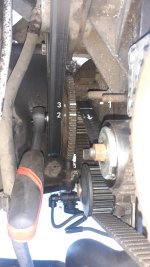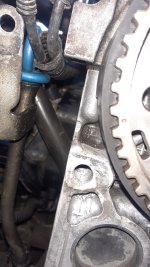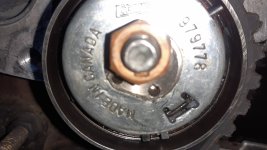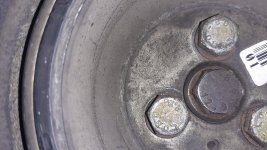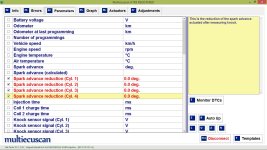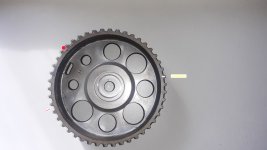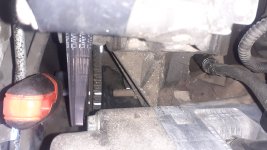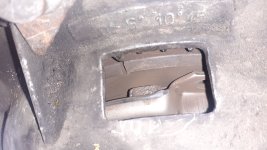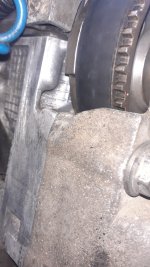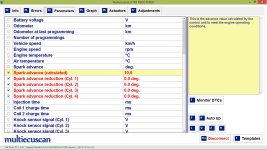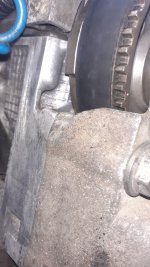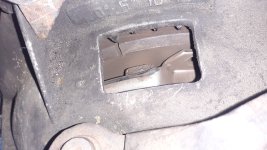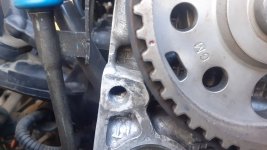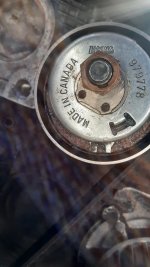Mike1alike
Established member
Well... I had an accident back in 2018. I crashed into the road saftety guardrails and the car's front crossbar (the one next to the radiator) broke and came inside and hit the original pulley, made a really big dent into it. After that I got this new pulley and rebuild the head and new HG and all. This new pulley wasn't easy to find and I had it ordered from Fiat Italia, the order was made by the VIN number and engine details, so it fits. That inside tooth might be slightly slimmer than the original one, but anyway, the first one is also narrower than the space in the camshaft, so it's kind of the same. After that first fit, when I put a new camshaft seal I was paying attention at how it is fit and it was with the tooth straight to the middle of that space. By the marks I made then, I think that the camshaft pulley was timed 1 or 2 teeth forward than normal, so I tried this time to set the timing bang on. Just I couldn't find the correct timing diagram for this engine yet and on the forum, all other users that mentioned this problem didn't come with the right answer. At my first attempt I set the camshaft as recommended with the locking tool at the other end if the shaft (not the one with the pulley) and that is no good at all. The engine didn't start and I had exhaust gas coming out of the intake, so timing is totally offset this way.
I think the right way to set it is with the crankshaft on no. 1 cylinder at TDC and the camshaft with that red dot (on my pulley) aligned with the mark on the head.
I'll see how it goes, it's just snowing here non stop for 3 days now, I barely could catch a break in between to put everything back on. I took the engine mount off again now and when the snow allows me, I'll time it right.
I think the right way to set it is with the crankshaft on no. 1 cylinder at TDC and the camshaft with that red dot (on my pulley) aligned with the mark on the head.
I'll see how it goes, it's just snowing here non stop for 3 days now, I barely could catch a break in between to put everything back on. I took the engine mount off again now and when the snow allows me, I'll time it right.


